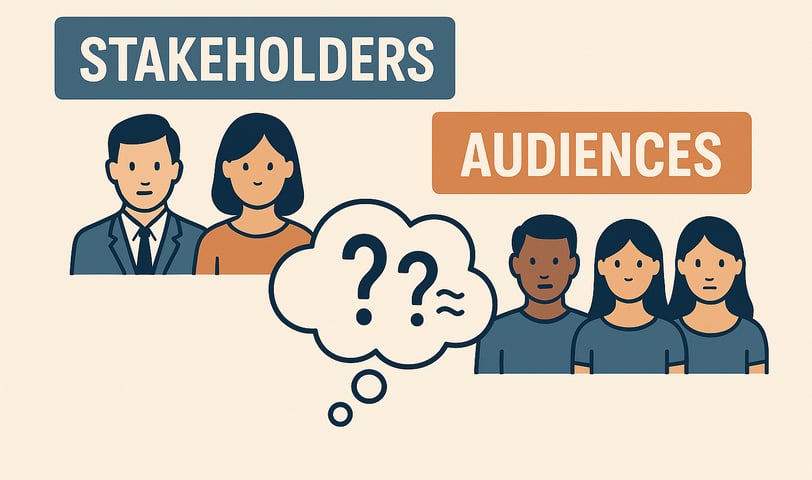Audience and Stakeholder Confusion
Blog post description.
Jack Gaines
6/15/20253 min read


Recently, I have seen public affairs practitioners struggle with audiences and messaging. So, here is a simple trick: You inform the clients, message the customers and counter the competition. The challenge for public affairs is that we also have customers and competitors, and the messaging to the client, the customer, and the competition must align.
Client-based audiences: For DOD Public Affairs, we inform the U.S. Public, the administration, and Congress because they are our clients. They have the power to approve or disapprove our actions. For a client-based audience, your messaging is straightforward, with no frills, reporting on your organization’s actions and intent. The goal is to build trust between your organization and the client so your leadership does not face undue scrutiny or sanctions.
Customer-based audiences are people impacted by DOD plans and operations. For example, say a P.A. shop supports U.S. disaster recovery efforts or competes against malign actors in a region (PRC, Russia, et al.). Customer audiences would include their diaspora in the region, local populations the malign actor is messaging or trying to influence, and any pro or opposition groups in the region. The goal would be to build caution in supporting the opponent while promoting all U.S. efforts. PAO shops lead this effort by building credible content that demonstrates how the malign actor goes against the customer audience’s core values and content about how the U.S. supports those core values, wants, and needs. Stakeholders, including foreign media, partner nations’ public affairs, paid advertising, embassy public affairs, or information operations, help distribute the content.
The client message is the Public Affairs core, but then you add content for the customer-based messaging that promotes the organization’s values and goals.
The website “Legal Explanations” has an interesting take on Stakeholders. “The term ‘stakeholder’ originated in the 1700s as a reference to those who held money or property that was subject to being lost or won in a bet or wager.” The current word is a ‘bookie’ and is like an Escrow manager who works as an intermediary between two groups making a transaction.
Back to Legal Explanations, “From a legal perspective, stakeholders can have various degrees of power or influence over the outcome of a situation. For example, in a bankruptcy case, creditors are stakeholders who may be entitled to a portion of the assets of the bankrupt company. Similarly, in a merger or acquisition, shareholders of both companies are stakeholders who must approve the transaction.”
Basically, stakeholders are people outside your organization who vote on the campaign.
Last is dealing with adversary messaging and counter-messaging. In public affairs, our goal is not to message the adversary directly. Information Operations is the lead for direct messaging to the adversary. Our goal is to win the audiences that the adversary is competing to influence. Typically, a counter-adversarial messaging campaign has two components: Pro and opposition research and messaging. Similar to a political campaign, pro/oppo messaging starts with research. First, by researching your side to look for how the adversary can harm your mission by exposing an issue (for example, soldiers/sailors in town getting drunk and in fights) and your proponent messaging and how you can overcome the issues and support the mission. The second is pro/oppo research on the adversary to expose the harm they cause and what aspects of their outreach and messaging to attract the audience.
Once you understand their ‘playbook,’ steal their good ideas that you can use and add them to your campaign while promoting the items they cannot steal from you and exposing their actions that offend the population. In the meantime, have a ‘red team’ look at the outreach they could steal and use and issues they would expose to defame your operation and build responses that protect your campaign.
46x Community Pages


